CSCI Faculty Research
Collaborative Research Awards
-
At Cal State East Bay, it is difficult for those who love to teach to sustain meaningful research programs without collaboration and resources of some kind, which support one’s focus on the research despite other priorities and interruptions. The collaborators might be one’s own students, other Cal State East Bay faculty, or collaborators might be from other universities, research laboratories, or companies, or some combination of these.
The purpose of these awards is to provide modest support that can increase the capacity of faculty members in the College of Science to sustain meaningful, productive long-term research programs, and to bring intellectual enrichment to their classroom, their department, and to the college and community. An October 15 submission deadline for tenured faculty provides sufficient time including summer for proposal preparation, including literature search, pilot research, and establishment of necessary collaborations and permissions. A March 15 submission deadline for untenured faculty gives new faculty nearly a whole academic year to prepare their proposal. -
Proposals will be evaluated primarily based on scientific merit, and secondarily on the robustness of the collaboration envisioned and the project’s relevance to the interests and concerns of society at large. If there is to be an outside collaborator, that individual’s letter of commitment to the project and evaluation of the proposal must be included in the proposal. In the evaluation of scientific merit, the evaluation criteria should include the background and prior related work the researcher brings to the proposed project, the feasibility of the deliverables, and on the degree to which the proposed budget is designed to appropriately support the project. In other words, we will seek projects that are within the grasp of the researcher as demonstrated by prior work. The research can be in any of the fields within the programs of the College of Science, and the interdisciplinary element may include a related field inside or outside of the College of Science. Projects involving human subjects must show evidence of IRB approval, and projects involving animal subjects must show evidence of approval by the Animal Care Committee.
A progress report is due within a year of funding. A final report is due after a year and a half, and should include any manuscript or evidence that a scientific journal has accepted the resulting paper for publication. The quality of the final report will have a significant bearing on whether any future proposals by that person will be funded under this program.
A Review Committee consisting of Professor Emerita Joan Sieber (the convening and nonvoting member) and three faculty members from three different disciplines to be appointed by the College Dean will evaluate proposals.
Based on the experience of making awards for this first year of proposals, we wish to clarify the criteria for awards. Preference is given to proposals for research that:- Help prepare students for the science/technology workforce of tomorrow
- Empower students as collaborators and potential co-authors of research
- Focus on topics that are somehow of social significance, whatever the field of science or technology
- Apply research to problems that span multiple disciplines, thus mirroring the current integration of fields of science/technology and their methodologies
- Demonstrate your willingness to share the (modest) funding with other applicants by asking for the absolute minimum needed
- Involve collaborators from other departments, and universities, or companies, research laboratories or agencies
- Demonstrate that they are creatively drawing support from other resources as well
- For example, Cal State East Bay’s Center for Student Research Scholar’s Program might also be used to provide support for student collaborators
- A scientist with lots of outside support should not apply, to add a little more money to the pot
- Someone contemplating development of a whole new research direction for which they have not developed and tested their methodology
- Someone wishing to pay students who would only help out with the investigator’s own obscure or isolated research program
- A researcher wanting to receive a stipend for themselves.
-
For this round of funding, a total of $15,000 is available. The maximum award is $5,000 and partial awards may be funded. The awards can be used to support research related activities that include supplies & equipment, travel, conference attendance, and research assistant stipends.
Future funding will give preference to programs that have continued to develop perhaps with prior funding from this small grant program. -
Proposals from tenured faculty are due October 15 every year. A second round of funding will occur in the spring with a proposal deadline of March 15. Proposals should include an abstract, 3-page project description that includes methodology, specific outcomes and deliverables, and a timeline. In addition there should be a 1-page budget and budget narrative, and, where appropriate, a letter of support from an external collaborator, and any other relevant permissions (e.g., IRB approval, agreements from agencies to share information with the researchers). Awards will be announced within a few weeks of the submission due date, and funds will be available immediately thereafter.
-
Metabolomic Analysis of Salinity Stressed Pistachios
Principal Investigators: Dr. Monika Sommerhalter
Department of Chemistry and Biochemistry, CSU East Bay
Abstract: With climate change non-saline water will become a scarce but necessary resource to maintain agriculture and therefore our food supply. Some plants, including pistachio trees, are able to withstand irrigation with saline water as in brackish but not ocean water. Shifting agricultural practices to more salt-tolerant plants could preserve freshwater resources. This project aims to elucidate the biochemical response of pistachio trees to salinity stress. My collaboration partners are Dr. Gary Baňuelos from the US Department of Agriculture – Agricultural Research Service (USDA-ARS), faculty and students at Fresno State, and five undergraduate research students at CSUEB. This collaboration is already well established. With the help of this grant, I seek to add a new research component in the form of a paid metabolomic pilot study. This pilot study will focus on phenolic compounds. In our previous work, we observed an increase in phenolic compounds in leaves of pistachio trees subjected to saline irrigation.Phenolic compounds serve as antioxidants and protect the plant tissue from radical oxygen species (ROS). An increase in ROS is a known consequence of salt-induced plant stress. With the help of the services from the Metabolomics Core Facility at UC Riverside we can find out which of the many plant phenolic compounds change in concentration as a response to salt stress. This pilot study will provide an excellent opportunity to train my research students in metabolomics (e.g.; how to obtain and evaluate data encompassing the many individual metabolites of an organism). We will use the data of the pilot study to design new experiments. We will quantify specific phenolic compounds selected from the metabolomic study and inspect the activity of enzymes involved in the transformation of these compounds. As my collaboration partners and I are moving forward with our study on the salt-tolerance of pistachio trees, we will apply for more funding. If this pilot study turns out to be successful, we will include metabolomic investigations for phenolics and other types of metabolites (e.g.; sugars, amino acids, lipids) in our next grant applications.Progress Update:
This collaborative research award enabled me and my research team to conduct a metabolomic pilot study with pistachio leaf samples. The pistachio leaf samples stem from a salinity tolerance study conducted at the Agricultural Research Service - US Department of Agriculture (ARS-USDA) in Parlier, CA. My main collaborator, Dr. Gary Baňuelos, and his team planted pistachio trees into a research field site and irrigated these trees with water at different salinity levels. The goal of this study is to find a threshold for saline irrigation, so that pistachio growers can use low quality water (for example brackish water) for irrigation without damaging their pistachio orchards. Dr. Baňuelos’ team is sending pistachio leaf and nut samples to my research group at CSU East Bay for biochemical analysis. We aim to find biomarkers which are molecules that change in their concentration levels in response to salinity stress. A better molecular understanding of the plant’s stress response will enable us to better define the salinity threshold. Our preliminary results indicated that phenolic compounds might serve as biomarkers for salinity stress. To obtain more detailed information on individual phenolic compounds we decided to use the services of a metabolomic facility. Metabolomic facilities have instrumentation (liquid chromatography paired with mass spectrometry) and the expertise to survey large classes of smaller molecules, for example amino acids, lipids, sugars, and phenolic compounds, that make up the metabolism of an organism.
I obtained the collaborative research award in the middle of the Fall semester 2022. In Fall 2022 my undergraduate research team consisted of four students (Ryan Luu (CSR scholar), Michael Rivera, Esiason Rodriguez, and Quierra Shugart). By Spring 2023, I was able to recruit three additional students (Feliza Dao, Sabbu Shrestha, and Manmeet Kaur). In addition to sample preparation, my students learned about metabolomics and performed additional experiments to determine total antioxidant capacity and total concentration of phenolic compounds, photopigments, and soluble sugars.
The metabolomic study was carried out at the Metabolomic Facility of UC Riverside in April 2022. Dr. Amancio de Souza was my main point of contact. We sent 24 lyophilized pistachio leaf samples to the metabolomic facility. Lyophilization is used to preserve biological samples via a freeze-drying procedure. This sample treatment was recommended by Dr. Souza. An apparatus with a vacuum pump and cooling compartment was available in the research laboratory of my colleague Dr. Michael Groziak (Chemistry and Biochemistry Department, CSUEB). The metabolomic analysis conducted at UC Riverside resulted in the detection of 20 different phenolic compounds. Six of these compounds showed a weak dependency on salinity treatment. These compounds were myricetin 3-galactoside, myricetin 3-rutinoside, pinocembrin, naringenin, naringenin chalcone, and catechin.
My research group and I are currently conducting our own HPLC-based identification and quantification of phenolic compounds. HPLC stands for high-performance liquid chromatography. Since we do not have the same instrumentation as a metabolomics facility we can only detect phenolic compounds in our samples for which we have standards. A standard is a purchased pure compound that the experimenter is trying to detect and to quantify in the sample of interest. I used the remaining money from this award and funding provided by the Chemistry Department to purchase individual phenolic compounds. We leveraged the results of the metabolomic pilot study and consulted the scientific
literature to select our HPLC standards. This Fall semester (Fall 2022) my research team currently consists of four students (Takudzwa Chirenje (CSR scholar), Manmeet Kaur, Rebecca Chavez, Viral Chhaganbhai (graduate student)). We were able to corroborate the presence of catechin in the pistachio leaf samples. We discovered a significant catechin concentration increase in young pistachio leaves (leaves collected from the tip of a branch) of PG1 rootstocks irrigated with saline water. Older leaves of the same PG1 rootstock that were collected closer to the stem did not show any significant change of catechin concentration as a function of saline irrigation. This part of the research project is still ongoing. We are currently screening approximately 30 different phenolic compounds. In addition to the leaf samples that were sent to the metabolomic facility we are also investigating pistachio nut extracts and we will soon receive a new set of leaf samples from Dr. Baňuelos’ team.
I am happy to report that our HPLC-based work on phenolic compounds led to a new collaboration with my colleague Dr. Stephanie Zaleski (Chemistry and Biochemistry Department, CSUEB). Her group is using surface enhanced Raman spectroscopy (abbreviated SERS) to detect and quantify phenolic compounds. We are now sharing our reagents and results with each other. We already had one joint research group meeting and will host more so that our students can learn from each other. Dr. Zaleski’s group will apply the SERS technique to our pistachio leaf extracts. My research group already investigated the same extracts with HPLC. We will compare and contrast the advantages and limitations of both techniques with each other.
-

Race in Political Discourse
Principal Investigators: Dr. Negin Toosi Department of Psychology, CSU East BayAbstract: After the murder of George Floyd and the subsequent protests that took place in the summer of 2020, a group of psychology faculty set out to examine the first formal statement provided by members of the U.S. Senate and House of Representatives on their official governmental websites in response to these events. We combined these statements with data on the congressperson’s race, gender, region, political party, and percentage of the population in the congressperson’s jurisdiction that was African-American, and support for the Black Lives Matter movement in their state. The congresspeople’s statements were coded along a number of dimensions, including whether or not racism was identified as a factor in George Floyd’s death, apology elements, statements in support of the status quo, and mentions of religion (e.g. quoting scripture). In order to finish analyses, prepare manuscripts for publication, and present at conferences, we are seeking funds to pay a research assistant, compensate online participants, and cover conference fees.Read the article: Recognizing racism in George Floyd's death
-
Functional Assessment of Internet Gaming
Principal Investigators: Dr.Liz Kyonka Department of Psychology, CSU East BayAbstract: We propose to develop a questionnaire that identifies the behavioral consequences that sustain internet gaming in individuals, and to evaluate its relation to internet gaming disorder. The new questionnaire will identify the consequences that maintain an individual’s internet gaming. This is a necessary first step in developing targeted interventions to modify gaming behavior and evaluating how different consequences are related to problem gaming can be expected to provide meaningful insight into what distinguishes healthy gaming behavior from problem gaming..
-
Investigator: Michael P. Groziak, Chemistry and Biochemistry
Project Title: Synthesis and Antibacterial Assay of New Boron Heterocycles
Collaborator: H. Howard Xu, Department of Biological Sciences, CSU Los AngelesThe proposed work is a drug discovery effort that seeks to continue a fruitful collaboration between a synthetic organic chemist and a bacteria-specializing biologist, with compounds prepared at CSUEB being sent down to CSULA for testing. Joint publications featuring student co-authors are the primary to be expected from this project. Our collaborative work began in 2010 and was supported by a Sieber Interdisciplinary Research Award. The Groziak and Xu Groups have examined more than 4 dozen compounds, found 6 new compounds with good antibacterial activity, and published 7 papers describing various aspects of their joint efforts (list at end). The first Sieber award, some Faculty Support Grants, and a 2018 Collaborative Research Award that enabled these accomplishments. With continuing College of Science Collaborative Research Award funding, targets will be synthesized, purified, characterized, and tested for antibacterial properties. These are analogs of a known antibacterial 4-toluenesulfonylated boron heterocycle (first compound shown below). A comparison of some of our past targets to this lead reveals a close structural resemblance. Our central hypothesis in the proposed work is that an acyl substituent can serve as a suitable replacement for the sulfonyl one, maintaining or even enhancing the enzyme inhibition known to be the mechanism of action of the known bactericidal boron heterocycle benchmark compound.The goal of this program is to help develop new anti-TB drugs which are becoming sorely needed due to the rise of multidrug-resistant strains of TB.
-
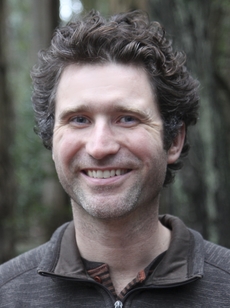 Study of semiconductor quantum ring nanostructures using novel terahertz spectroscopy techniquesPrincipal Investigators: Dr.Ryan Smith, Ph.D. Department of Physics, CSU East BayAbstract: I am requesting $1908 to support travel and modest equipment needs to carry out experimental laser physics research at the Max Born Institute (MBI) in Berlin, Germany, collaborating with scientists in the Thomas Elsaesser laboratory as well as colleague Prof. Jong Su Kim in South Korea who will fabricate samples. This work would involve utilizing the Berlin lab’s state-of-the-art technique known as “terahertz two-dimensional terahertz spectroscopy” to investigate the properties of semiconductor quantum ring structures (QRs). The laboratory at MBI is extremely well-suited for this study because there is a functioning terahertz two-dimensional terahertz spectroscopy setup which is configured using an amplified pulsed laser system which permits a variety of experiments to be performed. While the dormitory stay in Berlin will most likely be covered by a grant from the German government (DAAD), I am applying for funding for the flight and some mirrors which are needed in the experiment.
Study of semiconductor quantum ring nanostructures using novel terahertz spectroscopy techniquesPrincipal Investigators: Dr.Ryan Smith, Ph.D. Department of Physics, CSU East BayAbstract: I am requesting $1908 to support travel and modest equipment needs to carry out experimental laser physics research at the Max Born Institute (MBI) in Berlin, Germany, collaborating with scientists in the Thomas Elsaesser laboratory as well as colleague Prof. Jong Su Kim in South Korea who will fabricate samples. This work would involve utilizing the Berlin lab’s state-of-the-art technique known as “terahertz two-dimensional terahertz spectroscopy” to investigate the properties of semiconductor quantum ring structures (QRs). The laboratory at MBI is extremely well-suited for this study because there is a functioning terahertz two-dimensional terahertz spectroscopy setup which is configured using an amplified pulsed laser system which permits a variety of experiments to be performed. While the dormitory stay in Berlin will most likely be covered by a grant from the German government (DAAD), I am applying for funding for the flight and some mirrors which are needed in the experiment. -
Inhibition of serotonin signaling as a novel control method for Drosophila suzukiiPrincipal Investigators: Dr.Nazzy Pakpour Department of Biological Sciences, CSU East Bay & Dr. Divya Sitaraman, Department of Psychology, CSU East BayAbstract: Spotted wing drosophila (Drosophila suzukii) is an invasive agricultural pest. Unlike most Drosophila species, D. suzukii females have a serrated ovipositor, which allows them to lay their eggs in ripening fruits. As a result, the larva of D. suzukii develop and feed inside the fruit causing significant damage and rot that renders the fruit unmarketable. D. suzukii infestations in California are estimated to cause $500 million in damages annually. Traditional pesticide applications have proven ineffective as aerosol pesticides are unable to reach D. suzukii larval stages that reside underneath the skin of ripening fruits. Therefore, there is an urgent need for novel control strategies for D. suzukii that is specific to the physiology and behavior of these organisms. We propose to use insights from a related species D. melanogaster to target appetite suppression and sleep deprivation in D. suzukii to reduce mating and eg -laying behavior. In our preliminary studies with D. melanogaster, we found that ingestion of a serotonin receptor antagonist reduced both egg deposition and lifespan. Further, chronic sleep-deprivation with caffeine reduces courtship behavior. Based on these data, we hypothesize that treatment of the food sources of D. suzukii with a serotonin inhibitor, and non-toxic sleep-depriving agents like caffeine, will alter the feeding and sleep behaviors of adult flies resulting in reduced lifespan, mating vigor and egg laying.
-
LSTM Network Based Speculative Packet DispatchPrincipal Investigators: Dr. Alex Sumarsono, School of Engineering, CSU East BayAbstract: Virtual Output Queuing (VOQ) is an architecture that is widely employed in modern computer networking products. Traffic from every ingress port is stored in a set of queues mirroring the structure of the egress ports. This architecture allows the effects of congestion on a given egress port to be completely isolated from other ports. A request-grant protocol is used to route packets from the ingress side to the egress side. A grant signal is generated based on some fixed threshold associated with the amount of available space in the egress buffer. The buffer needs to be sized deep enough to accommodate the largest packet size dispatched from ingress under the worst case scenario involving the presence of heavy congestion after the grant signal is issued. However, waiting for a grant signal before dispatching packets could incur significant end-to-end latency and throughput degradation. A machine learning based solution, referred to as Speculative Packet Dispatch (SPD) is investigated and proposed in this research. SPD eliminates the request grant protocol completely. Packets are dispatched speculatively from ingress to egress based on the prediction of space availability in the egress buffer. This prediction is performed by a Long Short Time Memory (LSTM) recurrent neural network incorporated as part of the VOQ controller. The LSTM is trained by time-series data generated from previous observations on the queue occupancy. It is expected that SPD will deliver better system performance, reduce buffering requirements and preserve the benefits of VOQ.
-
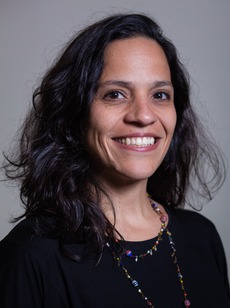 Can snail microbiome explain susceptibility to schistosomiasis infection? Understanding schistosomiasis through the lenses of Environmental EpidemiologyPrincipal Investigators: Dr. Ana Almeida, MD, , Ph.D. Department of Biological Sciences, CSU East Bay and Dr. Lucio Macedo Barbosa, MD, Ph.D, Department of Parasitology and Epidemiology Escola Baiana de Medicina e Saúde Pública (Salvador/Bahia, Brazil)Abstract: Schistosomiasis is a disease caused by parasites of the genus Schistosoma, commonly known as blood- flukes. These parasitic worms spread via contact with contaminated water infested with infected freshwater snails. In 2015, the World Health Organization estimated that 252 million people were affected by schistosomiasis, and approximately 200,000 died as a consequence of this disease in the previous year. In tropical countries, where this disease is most commonly found, around 700 million people are exposed to schistosomiasis making it - second only to malaria - among the parasitic diseases with the greatest economic impact. The life cycle of a Schistosoma worm starts with the elimination of eggs with human feces or urine in a body of fresh water. Under optimal conditions, these eggs hatch as miracidia that, in turn, infect freshwater snails, their intermediate hosts. Inside the snail, the miracidia undergoes successive generation of sporocysts that are eliminated in water as cercariae. Cercariae penetrate the skin of humans, migrate to the liver portal system and other veins of the digestive system, mature into adult worms and, through sexual reproduction, form eggs that are eliminated in the water through contaminated feces or urine, completing the Schistosoma life cycle. Curiously, within a contaminated body of fresh water, less than 5% of snails are infected with sporocysts. The reasons why only a small number of snails are susceptible to miracidia infection are still unclear. In epidemiology, infectivity is the ability of a pathogen to establish an infection. More specifically, infectivity is a pathogen's capacity for horizontal transmission or, how frequently it spreads among hosts. Here, we hypothesize that miracidia infectivity is dependent on the snail specific microbiome. We expected that infected and non-infected snails harbor different microbiome compositions, and that these differences are capable of explaining the disparity in snail susceptibility within an endemic area. Also, we expect that snail microbiomes are influenced by geographical location (urban vs. rural areas), and but a similar patter of ‘potentially protective’ snail bacterial microbiome composition can be identified regardless of geographical location. In order to test these hypotheses we will compare the microbiome of infected and non-infected snails in four bodies of fresh water across urban and rural endemic areas in Bahia State, Brazil. We will use next- generation sequencing technologies to sequence the 16S rRNA gene of bacterial communities present in the snail’s body in order to characterize its microbiome. Alpha and beta diversity measurements such as disparity, evenness, and richness will be estimated from the sequencing data and compared within and between urban vs. rural and infected vs. non-infected snail populations. As a result of this project we will further characterize the microbiome of freshwater snails and its relationship to a major tropical parasitic disease, schistosomiasis. If a common microbiota is identified as protective to miracidia infection, public health measures can be planned on the basis of this information in order to help promote the establishment of a beneficial microbiome across snail populations within endemic areas. More data will certainly be required until such approaches can be taken, but the data generated in this project will shed a new light into future venues for combining Environmental Epidemiology and Public Health.
Can snail microbiome explain susceptibility to schistosomiasis infection? Understanding schistosomiasis through the lenses of Environmental EpidemiologyPrincipal Investigators: Dr. Ana Almeida, MD, , Ph.D. Department of Biological Sciences, CSU East Bay and Dr. Lucio Macedo Barbosa, MD, Ph.D, Department of Parasitology and Epidemiology Escola Baiana de Medicina e Saúde Pública (Salvador/Bahia, Brazil)Abstract: Schistosomiasis is a disease caused by parasites of the genus Schistosoma, commonly known as blood- flukes. These parasitic worms spread via contact with contaminated water infested with infected freshwater snails. In 2015, the World Health Organization estimated that 252 million people were affected by schistosomiasis, and approximately 200,000 died as a consequence of this disease in the previous year. In tropical countries, where this disease is most commonly found, around 700 million people are exposed to schistosomiasis making it - second only to malaria - among the parasitic diseases with the greatest economic impact. The life cycle of a Schistosoma worm starts with the elimination of eggs with human feces or urine in a body of fresh water. Under optimal conditions, these eggs hatch as miracidia that, in turn, infect freshwater snails, their intermediate hosts. Inside the snail, the miracidia undergoes successive generation of sporocysts that are eliminated in water as cercariae. Cercariae penetrate the skin of humans, migrate to the liver portal system and other veins of the digestive system, mature into adult worms and, through sexual reproduction, form eggs that are eliminated in the water through contaminated feces or urine, completing the Schistosoma life cycle. Curiously, within a contaminated body of fresh water, less than 5% of snails are infected with sporocysts. The reasons why only a small number of snails are susceptible to miracidia infection are still unclear. In epidemiology, infectivity is the ability of a pathogen to establish an infection. More specifically, infectivity is a pathogen's capacity for horizontal transmission or, how frequently it spreads among hosts. Here, we hypothesize that miracidia infectivity is dependent on the snail specific microbiome. We expected that infected and non-infected snails harbor different microbiome compositions, and that these differences are capable of explaining the disparity in snail susceptibility within an endemic area. Also, we expect that snail microbiomes are influenced by geographical location (urban vs. rural areas), and but a similar patter of ‘potentially protective’ snail bacterial microbiome composition can be identified regardless of geographical location. In order to test these hypotheses we will compare the microbiome of infected and non-infected snails in four bodies of fresh water across urban and rural endemic areas in Bahia State, Brazil. We will use next- generation sequencing technologies to sequence the 16S rRNA gene of bacterial communities present in the snail’s body in order to characterize its microbiome. Alpha and beta diversity measurements such as disparity, evenness, and richness will be estimated from the sequencing data and compared within and between urban vs. rural and infected vs. non-infected snail populations. As a result of this project we will further characterize the microbiome of freshwater snails and its relationship to a major tropical parasitic disease, schistosomiasis. If a common microbiota is identified as protective to miracidia infection, public health measures can be planned on the basis of this information in order to help promote the establishment of a beneficial microbiome across snail populations within endemic areas. More data will certainly be required until such approaches can be taken, but the data generated in this project will shed a new light into future venues for combining Environmental Epidemiology and Public Health. -
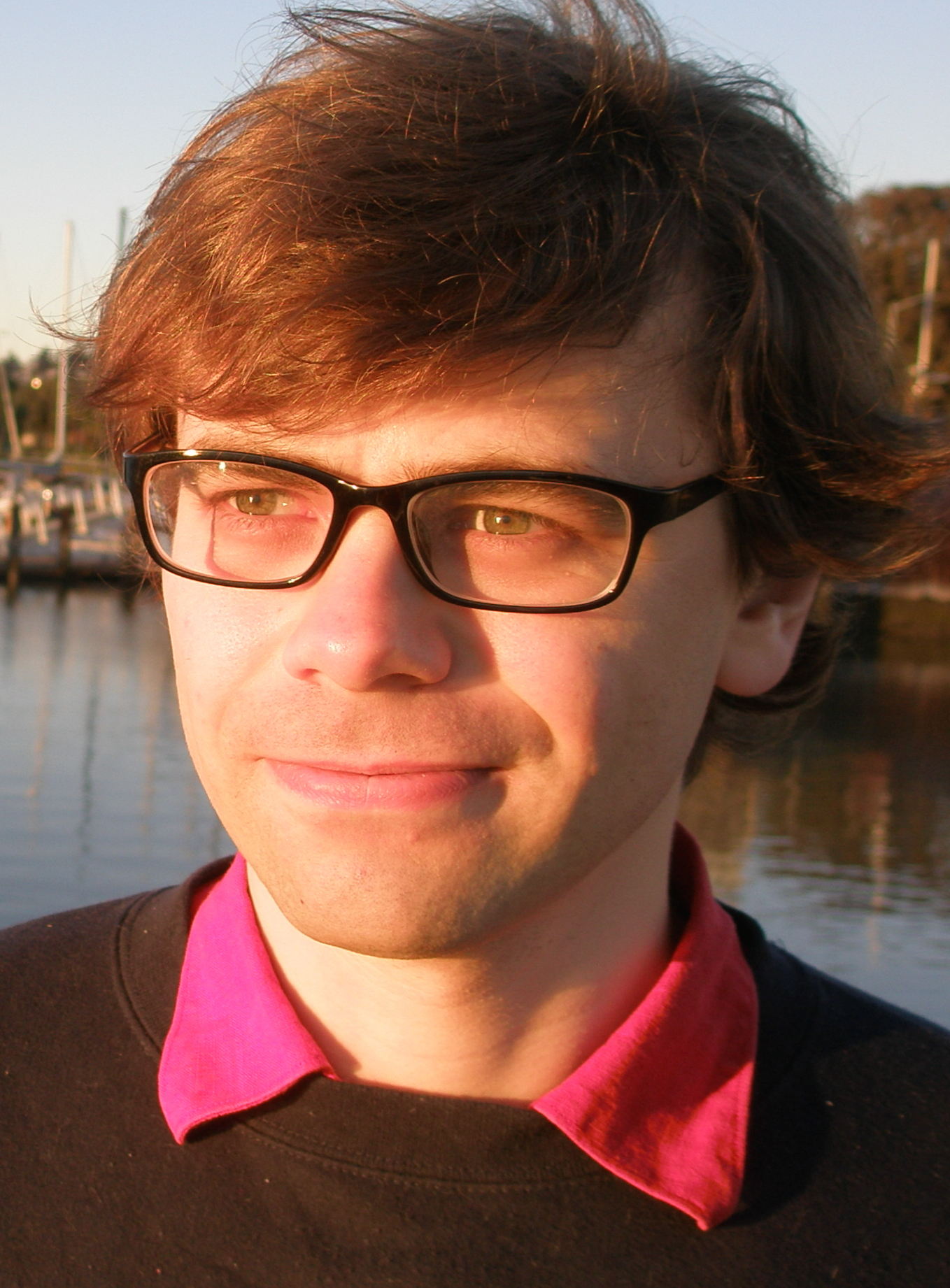 Modeling Thermally Activated Delayed Fluorescence In Bulk Molecular MaterialsPrincipal Investigators: Dr. Aleksey Kocherzhenko Department of Chemistry and Biochemistry Collaborators: Pauline Germaux, chemistry major/computer science minor, CSU East Bay Antonios Alvertis, Cavendish Laboratory, University of CambridgeAbstract: SThermally activated delayed fluorescence (TADF) is a physical process that holds promise for improving the energy efficiency of organic light-emitting diodes (OLEDs) used in displays of modern electronic devices and in lighting applications. It allows converting triplet excitons that cannot decay by emitting light to singlet excitons that can. TADF of individual molecules that exhibit it is commonly studied in solution, but in electronic devices such molecules form solid films. Interactions between molecules in a film (a) restrict molecular conformation and motion that have been shown to be important for TADF and (b) allow excitons to migrate within the material from one molecule to another, potentially reaching a molecule with a conformation in which TADF can occur efficiently. We propose to theoretically and computationally study these effects of intermolecular interactions in bulk organic solids on TADF from molecules that compose the solid. We will use classical molecular dynamics simulations to track conformational changes of molecules in the solid phase and will use simulations based on quantum dynamics models to track the migration of excitons within the solid. Based on our results, we hope to provide recommendations for designing solid films with optimal TADF properties for applications in next-generation OLEDs.
Modeling Thermally Activated Delayed Fluorescence In Bulk Molecular MaterialsPrincipal Investigators: Dr. Aleksey Kocherzhenko Department of Chemistry and Biochemistry Collaborators: Pauline Germaux, chemistry major/computer science minor, CSU East Bay Antonios Alvertis, Cavendish Laboratory, University of CambridgeAbstract: SThermally activated delayed fluorescence (TADF) is a physical process that holds promise for improving the energy efficiency of organic light-emitting diodes (OLEDs) used in displays of modern electronic devices and in lighting applications. It allows converting triplet excitons that cannot decay by emitting light to singlet excitons that can. TADF of individual molecules that exhibit it is commonly studied in solution, but in electronic devices such molecules form solid films. Interactions between molecules in a film (a) restrict molecular conformation and motion that have been shown to be important for TADF and (b) allow excitons to migrate within the material from one molecule to another, potentially reaching a molecule with a conformation in which TADF can occur efficiently. We propose to theoretically and computationally study these effects of intermolecular interactions in bulk organic solids on TADF from molecules that compose the solid. We will use classical molecular dynamics simulations to track conformational changes of molecules in the solid phase and will use simulations based on quantum dynamics models to track the migration of excitons within the solid. Based on our results, we hope to provide recommendations for designing solid films with optimal TADF properties for applications in next-generation OLEDs.
-
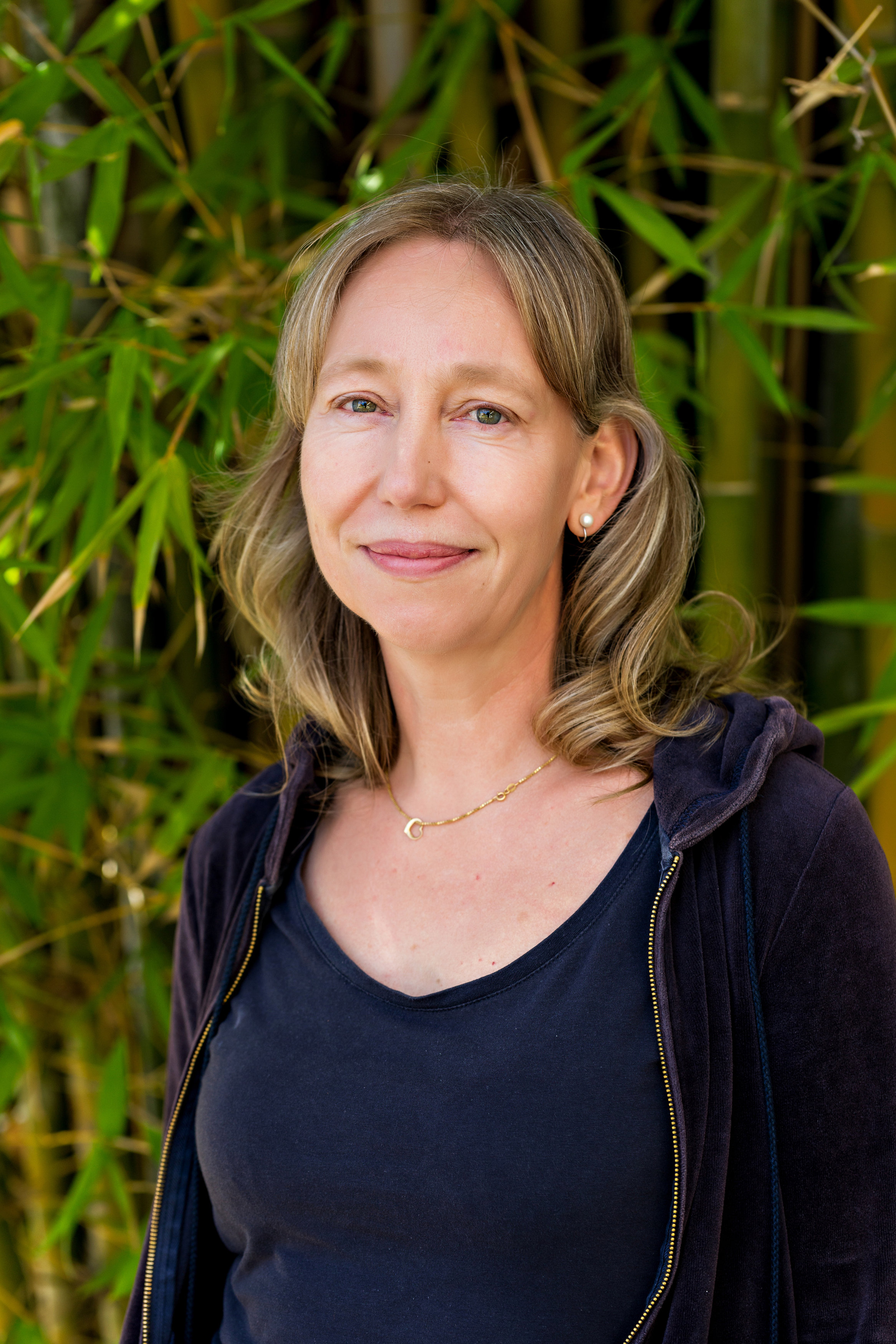 Next-generation RNA sequencing to untangle plant responses to nutrient deficiencies
Next-generation RNA sequencing to untangle plant responses to nutrient deficiencies
Principal Investigator: Claudia Uhde-Stone, Professor, Biological Sciences, CSU East Bay
Abstract: Plants require nutrients, such as phosphorus, nitrogen, and iron, for growth and development. Phosphorus is one of the most limiting nutrients for crop production worldwide. Phosphorus fertilizer is usually applied as rock phosphate, a non-renewable resource which, by some estimates, may be depleted in 100-300 years. In order to develop crop plants that can grow with less fertilizer, researchers are taking a closer look at plants that are well adapted to nutrient-poor soils. White lupin can grow in poor soils where other plants can’t grow, and has become a model plant for the study of plant adaptations to nutrient deficiency. Still, not much is known about the processes by which white lupin senses nutrient deficiencies and initiates responses. Elevated sucrose (sugar) transport from shoot to root appears to act as long-distance signal, initiating nutrient starvation responses in the root. However, sucrose may not specify which nutrient stress the plant is experiencing. We hypothesize that sucrose acts as a general nutrient starvation signal, and that additional signals are needed to communicate the specific nature of the nutrient deficiency. To untangle general and specific nutrient starvation responses, we propose to use next-generation RNA sequencing, a powerful tool for high-throughput analysis of gene expression (i.e. gene activity). Understanding how white lupin senses nutrient deficiencies and integrates specific and general nutrient starvation responses should be useful for developing plants that require less fertilizer while offering improved nutritional value for human consumption. -
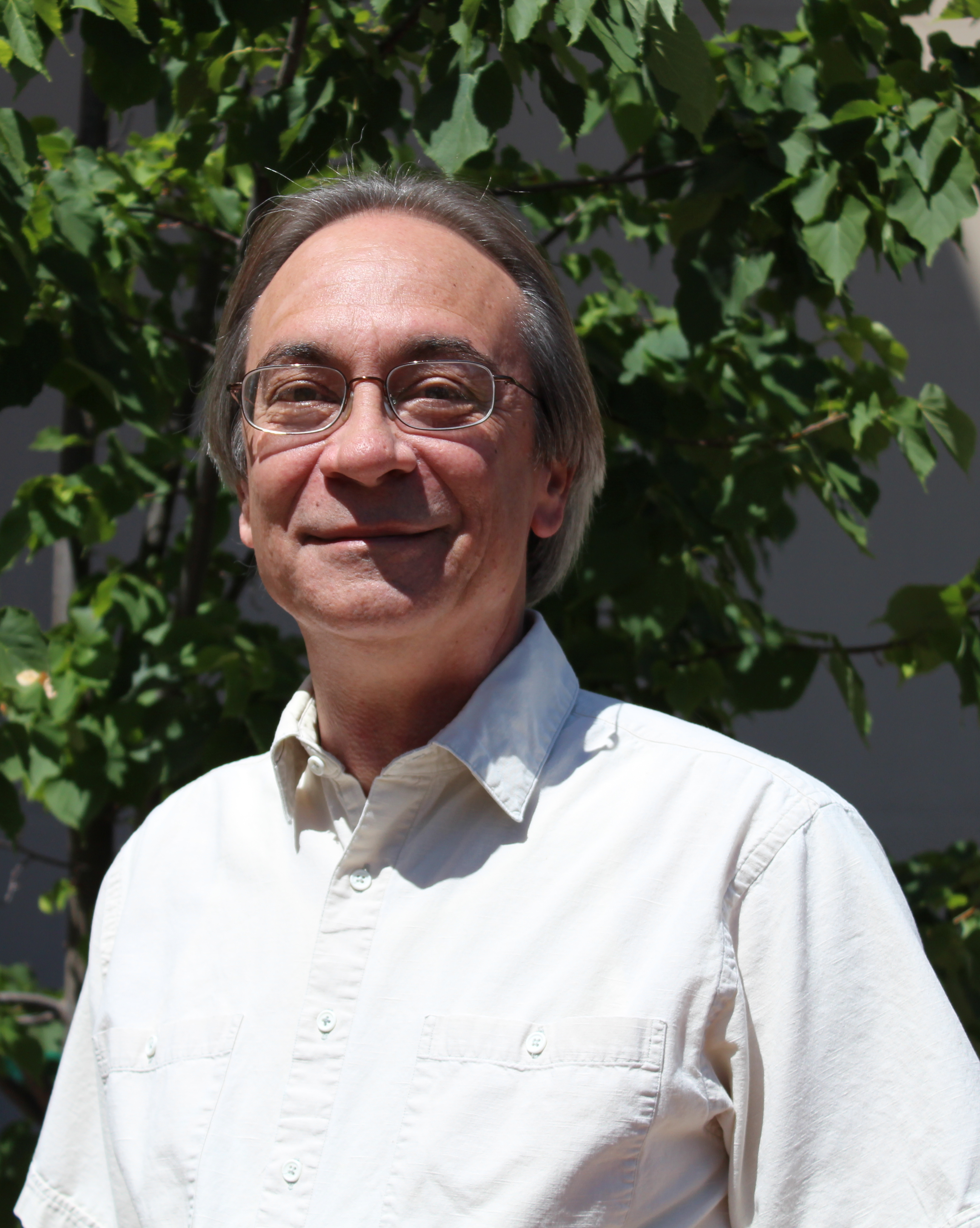 Organic and Medicinal Chemistry of Heterocycles and NucleosidesPrincipal Investigators: Michael Groziak, Ph.D. Department of Chemistry & Biochemistry, CSU East BayAbstract: The Groziak Group specializes in the organic and medicinal chemistry of heterocycles and nucleosides, developing new subclasses of these compounds to be used as biochemical tools, enzyme probes, and as potential biocidal, antiviral, or antitumor medicinal agents. Along the way, we enjoy developing new methodologies for the functionalization of heterocycles and for the synthesis of nucleosides. Most of the classes of compounds we investigate are chosen to advance biomedical research in areas like infectious diseases. Our lab’s day-to-day research efforts are focused on practicing the art of compound design, synthesis, and characterization. As a result of these efforts, we have gained extensive experience in the synthesis and characterization of stable boron heterocycles. One particular type of these boron heterocycles has been shown to exhibit good antibacterial properties, particularly against gram negative organisms, and we have synthesized a large number of them and have discovered a handful of new ones that possess good activity against the E. coli and M. smegmatis organisms. The present work continues this drug discovery effort with the fruitful collaboration between our synthetic organic chemistry group and an another CSU bacteria-specializing biology one. Compounds are prepared and chemically characterized here at CSUEB and then are sent down to CSULA for antibacterial testing. The overall goals of this collaborative project are to encourage medicinal chemists to investigate boron heterocycles more thoroughly as potential medicinal agents, and to discover new compounds that could potentially be used to develop new medicines for treating tuberculosis.
Organic and Medicinal Chemistry of Heterocycles and NucleosidesPrincipal Investigators: Michael Groziak, Ph.D. Department of Chemistry & Biochemistry, CSU East BayAbstract: The Groziak Group specializes in the organic and medicinal chemistry of heterocycles and nucleosides, developing new subclasses of these compounds to be used as biochemical tools, enzyme probes, and as potential biocidal, antiviral, or antitumor medicinal agents. Along the way, we enjoy developing new methodologies for the functionalization of heterocycles and for the synthesis of nucleosides. Most of the classes of compounds we investigate are chosen to advance biomedical research in areas like infectious diseases. Our lab’s day-to-day research efforts are focused on practicing the art of compound design, synthesis, and characterization. As a result of these efforts, we have gained extensive experience in the synthesis and characterization of stable boron heterocycles. One particular type of these boron heterocycles has been shown to exhibit good antibacterial properties, particularly against gram negative organisms, and we have synthesized a large number of them and have discovered a handful of new ones that possess good activity against the E. coli and M. smegmatis organisms. The present work continues this drug discovery effort with the fruitful collaboration between our synthetic organic chemistry group and an another CSU bacteria-specializing biology one. Compounds are prepared and chemically characterized here at CSUEB and then are sent down to CSULA for antibacterial testing. The overall goals of this collaborative project are to encourage medicinal chemists to investigate boron heterocycles more thoroughly as potential medicinal agents, and to discover new compounds that could potentially be used to develop new medicines for treating tuberculosis. -
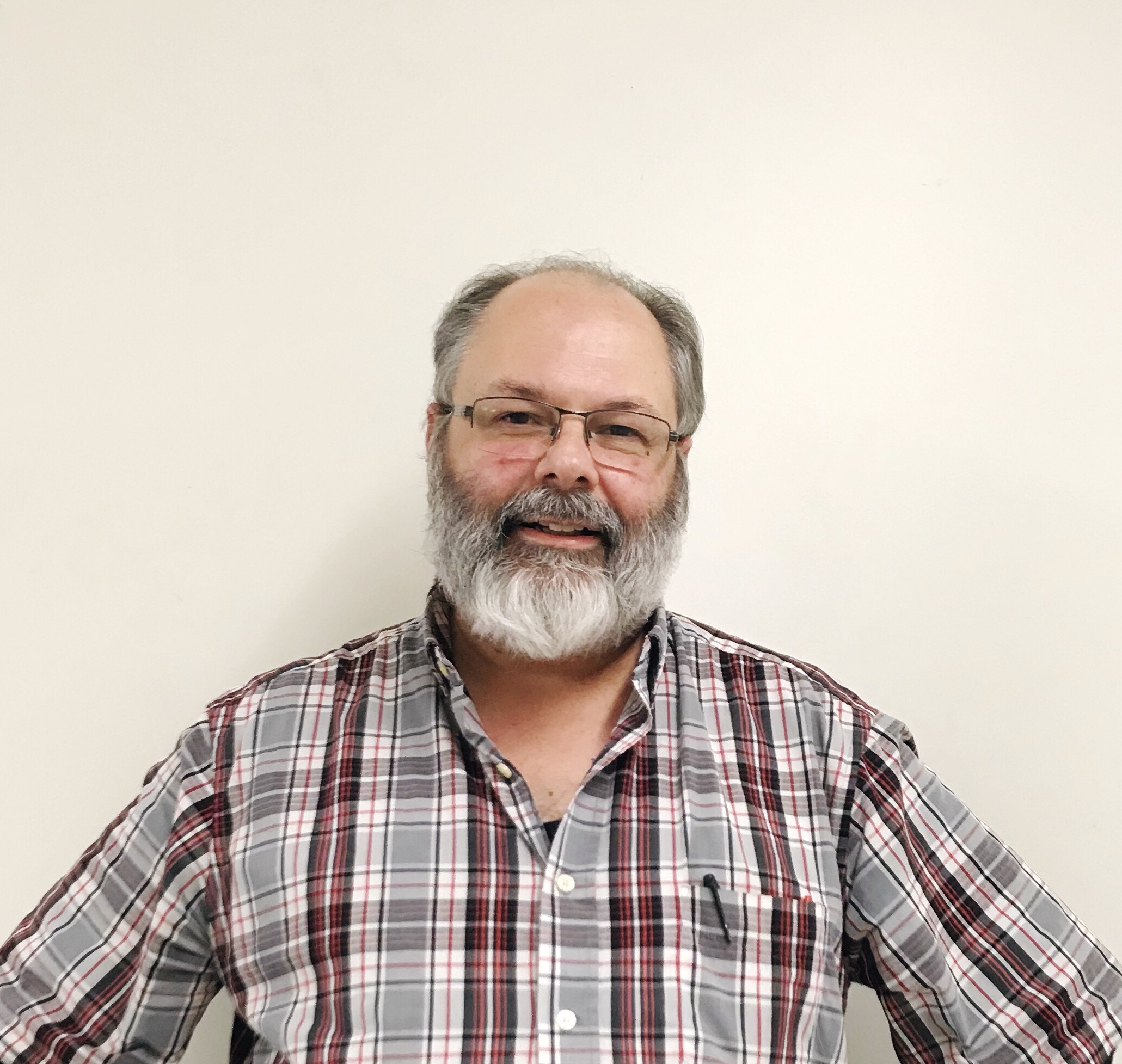 Isolation, Speciation and Characterization of the Microbiome from the Marine Nudibranch Tritonia tetraquetra
Isolation, Speciation and Characterization of the Microbiome from the Marine Nudibranch Tritonia tetraquetra
Principal Investigator: Ken Curr, Professor, Biological Sciences, CSU East Bay
Abstract: Tritonia tetraquetra (Tritonia), formally known as Tritonia diomedea, is a marine nudibranch that resides along the coastal waters of the Pacific Ocean, whose natural habitat is constantly evolving due to environmental changes along coastal waters (i.e. ocean acidification, increased temperature, etc.). Because sea slugs do not have a protective coating, as do most other mollusks, they are very susceptible to the changes in local environments. As conditions change, so do pathogens that infect Tritonia. Importantly, the ability in the way Tritonia fights off infectious pathogens remains a mystery. Most pathogens enter the nudibranch through the intestinal track since it is the most efficient way for the pathogens to be exposed to internal tissues. Microflora can
inhibit infection by preventing pathogenic bacteria from taking residence on the intestinal wall. This study will focus on an arm of the innate immune system of Tritonia by identifying the microbiota that line their intestinal wall. The microbiota is a part of the innate immune response and is one of the primary mechanisms in which invertebrates protect themselves from foreign invaders.
-
Coastal Wetlands
Principal Investigator: Patty Oikawa, Assistant Professor, Earth and Environmental Sciences, CSU East Bay
Collaborator: Sara Knox, Earth System Science, Stanford University
Abstract: Coastal wetlands play significant roles in global C cycling yet are currently not well represented in Earth system models. We propose to improve estimates of carbon (C) sequestration in coastal tidal wetlands. We plan to leverage ongoing high frequency measurements of atmospheric C fluxes collected in the Hayward shoreline.These high frequency data include eddy covariance measurements of vertical fluxesof CO2 and CH4. Funding from the Collaborative Research Fund would provide critical ancillary soil data which will improve understanding of C cycling. We plan to expand thebiogeochemical PEPRMT model to predict atmospheric C exchange in tidal marshes using the continuous data streams measured at the tidal marsh in a model-data fusion approach. Our project will provide, to our knowledge, the first dataset to include multi-year continuous measurements of atmospheric C exchange in a tidal wetland in the San Francisco Bay. This rich dataset, analyses and modeling efforts will improve our ability to incorporate coastal tidal wetland C dynamics into the Earth system models. -
 Transcriptomic Profiling and Domain Searches for Functional Characterization of Novel Virulence Determinants of Toxoplasma PathogenesisPrincipal Investigators: Ana Almeida, Ph.D. Biological Sciences, CSU East BayOur collaborative proposal aims at studying the molecular mechanisms underlying host-parasite interactions during Toxoplasma gondii infection of the gastrointestinal tract. Toxoplasma gondii is a single-celled, eukaryotic pathogen of medical and veterinary importance, as it can infect humans and virtually all warm-blooded animals. Most Toxoplasma infections occur following ingestion of oocysts from environmental reservoirs as well as tissue cysts in raw and undercooked meat from infected animals. Horizontal transmission between intermediate hosts can also occur, for instance, when a human eats undercooked lamb. Although infection with Toxoplasma is usually self-limiting in healthy adult humans, severe disease does sometimes occur and there exists no effective therapy to treat a chronic infection. This presents serious challenges should a chronically infected individual become immunocompromised, as reactivation of tissue cysts can lead to severe complications, especially in HIV-AIDS and transplant patients. In addition, Toxoplasma can cross the placenta during pregnancy and infect the developing fetus to cause congenital toxoplasmosis, lifetime sequelae, and abortions. While Dr. Guiton’s lab will carry out the in vitro and in vivo studies to uncover the genes involved in T. gondii life cycle as well as modulation of host responses, Dr. Almeida’s lab will carry out in silico studies of candidate proteins in order to predict their involvement in infection and pathogenesis. Also, Dr. Almeida’s lab will provide bioinformatics support for the analysis of large-scale datasets generated by the experimental approaches performed on Dr. Guiton’s lab.
Transcriptomic Profiling and Domain Searches for Functional Characterization of Novel Virulence Determinants of Toxoplasma PathogenesisPrincipal Investigators: Ana Almeida, Ph.D. Biological Sciences, CSU East BayOur collaborative proposal aims at studying the molecular mechanisms underlying host-parasite interactions during Toxoplasma gondii infection of the gastrointestinal tract. Toxoplasma gondii is a single-celled, eukaryotic pathogen of medical and veterinary importance, as it can infect humans and virtually all warm-blooded animals. Most Toxoplasma infections occur following ingestion of oocysts from environmental reservoirs as well as tissue cysts in raw and undercooked meat from infected animals. Horizontal transmission between intermediate hosts can also occur, for instance, when a human eats undercooked lamb. Although infection with Toxoplasma is usually self-limiting in healthy adult humans, severe disease does sometimes occur and there exists no effective therapy to treat a chronic infection. This presents serious challenges should a chronically infected individual become immunocompromised, as reactivation of tissue cysts can lead to severe complications, especially in HIV-AIDS and transplant patients. In addition, Toxoplasma can cross the placenta during pregnancy and infect the developing fetus to cause congenital toxoplasmosis, lifetime sequelae, and abortions. While Dr. Guiton’s lab will carry out the in vitro and in vivo studies to uncover the genes involved in T. gondii life cycle as well as modulation of host responses, Dr. Almeida’s lab will carry out in silico studies of candidate proteins in order to predict their involvement in infection and pathogenesis. Also, Dr. Almeida’s lab will provide bioinformatics support for the analysis of large-scale datasets generated by the experimental approaches performed on Dr. Guiton’s lab. -
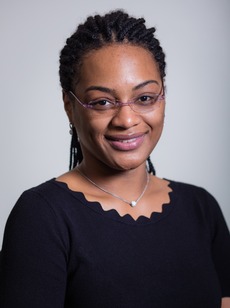 Transcriptomic Profiling and Domain Searches for Functional Characterization of Novel Virulence Determinants of Toxoplasma Pathogenesis
Transcriptomic Profiling and Domain Searches for Functional Characterization of Novel Virulence Determinants of Toxoplasma Pathogenesis
Principal Investigators: Pascale Guiton, Ph.D., Biological Sciences, CSU East Bay
Abstract: Toxoplasma gondii is a unicellular parasite responsible for toxoplasmosis, a disease afflicting one third of the world human population. There presently exists no cure forchronic toxoplasmosis. During infection, usually following ingestion of contaminated food or water, the parasite invades the host cell and resides within a parasitophorous vacuole (PV). Toxoplasma in its host will interconvert between many developmental forms, each biochemically and functionally distinct. Toxoplasma possess stage-specific transcriptomes. They encompass a plethora of genes, including pep1, gra9, and rop23, that encode hypothetical proteins predicted to be secreted inside the PV and/or directly into the host cell. Preliminary evidence from my laboratory indicate that pep1-; gra9-, and rop23-defective mutant parasites are severely attenuated in virulence in mice, suggesting that PEP1, GRA9 and ROP23 may be novel virulence determinants of Toxoplasma. We postulate that Toxoplasma secretes these three developmentally regulated proteins at specific phases in the pathogenic process to modulate host processes.To address this hypothesis, my students will use standard molecular cloning techniques to engineer parasite mutants expressing a C-terminal-tagged version of each protein. This tag will be used as proxy in immunofluorescence assays to determine the subcellular locations of PEP1 and ROP23 in Toxoplasma and during infection of human intestinal epithelial cells (hIECs). Furthermore, we will infect hIECs with either parental and knockout mutant strains and perform RNA sequencing, in collaboration with Dr. Ana Almeida, to assess whether PEP1, GRA9, and/or ROP23 modulate host processes during Toxoplasma infection. Furthermore, Dr. Almeida’s group will conduct a variety of bioinformatic analyses to identify functional domains in these proteins that may provide clues as to their mechanisms of action during infection. Once completed, this work will expand our understanding of the pathogenicity of Toxoplasma and the therapeutic potentials offered by developmentally regulated virulence factors in the fight against toxoplasmosis. -
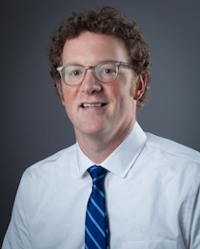 Politics at the Cutting Edge: Intergovernmental Policy Innovation in the Affordable Care ActPrincipal Investigators: Ann C. Keller (University of California, Berkeley), Philip B. Rocco (Marquette University), Andrew S. Kelly Ph.D., Assistant Professor Health Sciences California State University, East BayAbstract: Following the 2016 election, Republicans defended proposals to repeal and replace the Affordable Care Act (ACA) by citing state governments’ unique capacity to carry out policyinnovation as “laboratories of democracy.” This paper examines the assumption that grants to states, in the current polarized context, will stimulate significant health policy innovations.In contrast to prior scholarship, we focus on the implementation of the ACA’s State Innovation Models (SIM) initiative.The SIM initiative is specifically geared towards incentivizing states to experiment with new models of payment and delivery that can improve health outcomes and/or reduce health-care costs. Drawing on a combination of quantitative and qualitative evidence, we find that, states’ participation in SIM is shaped by partisanship, administrative capacity, economic characteristics, and policy legacies. Our findings have important implications for future efforts to reform the ACA by delegating to state governments the responsibility for policy innovation.
Politics at the Cutting Edge: Intergovernmental Policy Innovation in the Affordable Care ActPrincipal Investigators: Ann C. Keller (University of California, Berkeley), Philip B. Rocco (Marquette University), Andrew S. Kelly Ph.D., Assistant Professor Health Sciences California State University, East BayAbstract: Following the 2016 election, Republicans defended proposals to repeal and replace the Affordable Care Act (ACA) by citing state governments’ unique capacity to carry out policyinnovation as “laboratories of democracy.” This paper examines the assumption that grants to states, in the current polarized context, will stimulate significant health policy innovations.In contrast to prior scholarship, we focus on the implementation of the ACA’s State Innovation Models (SIM) initiative.The SIM initiative is specifically geared towards incentivizing states to experiment with new models of payment and delivery that can improve health outcomes and/or reduce health-care costs. Drawing on a combination of quantitative and qualitative evidence, we find that, states’ participation in SIM is shaped by partisanship, administrative capacity, economic characteristics, and policy legacies. Our findings have important implications for future efforts to reform the ACA by delegating to state governments the responsibility for policy innovation.
-
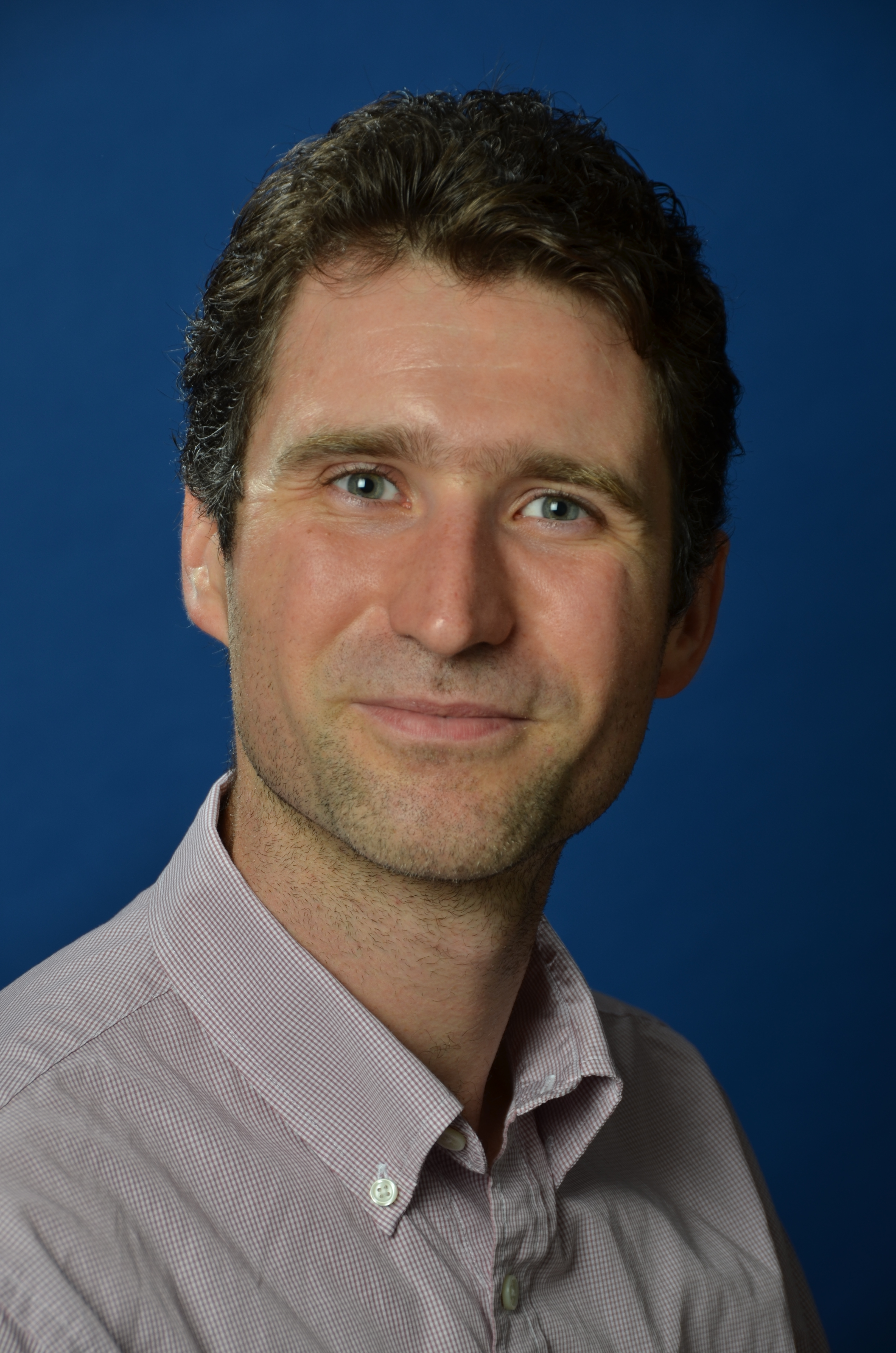 Time-resolved Microscopy of Semiconductor Quantum Ring NanostructuresPrincipal Investigator: Ryan Smith, Associate Professor, Physics California State University, East BayAbstract: My collaborative work is being conducted with Prof. Jong Su Kim, who prepares samples at Yeungnam University in South Korea and participates in the interpretation of results. The research goal is to characterize the lifetimes of excited states of quantum rings, a novel class of solid-state nanostructures. Study of the dynamics in individual quantum rings will be accomplished through combining microscopy and pulsed laser spectroscopy techniques. Understanding dynamic light-matter interaction at small-spatial and short-time scales will permit the control of electronic configurations using states of light, thus opening new pathways for fundamental investigation and integration into novel nanotechnology devices such as quantum information storage devices. Shrinking technologies can translate to vast enhancements in device speed, flexibility, and strength. As the scale of solid state devices trends toward the single-atom limit, quantum confinement gives rise to many new challenges that arise at the intersection of solid state electronics and modern optics. Small length scales of nanoscale size systems (a nanometer is one billionth of a meter) implies that understanding short timescale physics (~10^-15 seconds, or femtoseconds) can lead to breakthroughs in control and utilization of light-matter interactions. Considering the importance of fast time scale processes to progress in nanomaterials, ultrafast spectroscopy techniques utilizing pulses ~10 femtoseconds in duration with a large spectral bandwidth are ideal for quantifying such processes in nanostructures. As the scale of solid-state optoelectronic devices trends toward the single-atom limit, it is critical to understand the effects of the quantum confinement of charges at this small length scale.
Time-resolved Microscopy of Semiconductor Quantum Ring NanostructuresPrincipal Investigator: Ryan Smith, Associate Professor, Physics California State University, East BayAbstract: My collaborative work is being conducted with Prof. Jong Su Kim, who prepares samples at Yeungnam University in South Korea and participates in the interpretation of results. The research goal is to characterize the lifetimes of excited states of quantum rings, a novel class of solid-state nanostructures. Study of the dynamics in individual quantum rings will be accomplished through combining microscopy and pulsed laser spectroscopy techniques. Understanding dynamic light-matter interaction at small-spatial and short-time scales will permit the control of electronic configurations using states of light, thus opening new pathways for fundamental investigation and integration into novel nanotechnology devices such as quantum information storage devices. Shrinking technologies can translate to vast enhancements in device speed, flexibility, and strength. As the scale of solid state devices trends toward the single-atom limit, quantum confinement gives rise to many new challenges that arise at the intersection of solid state electronics and modern optics. Small length scales of nanoscale size systems (a nanometer is one billionth of a meter) implies that understanding short timescale physics (~10^-15 seconds, or femtoseconds) can lead to breakthroughs in control and utilization of light-matter interactions. Considering the importance of fast time scale processes to progress in nanomaterials, ultrafast spectroscopy techniques utilizing pulses ~10 femtoseconds in duration with a large spectral bandwidth are ideal for quantifying such processes in nanostructures. As the scale of solid-state optoelectronic devices trends toward the single-atom limit, it is critical to understand the effects of the quantum confinement of charges at this small length scale. -
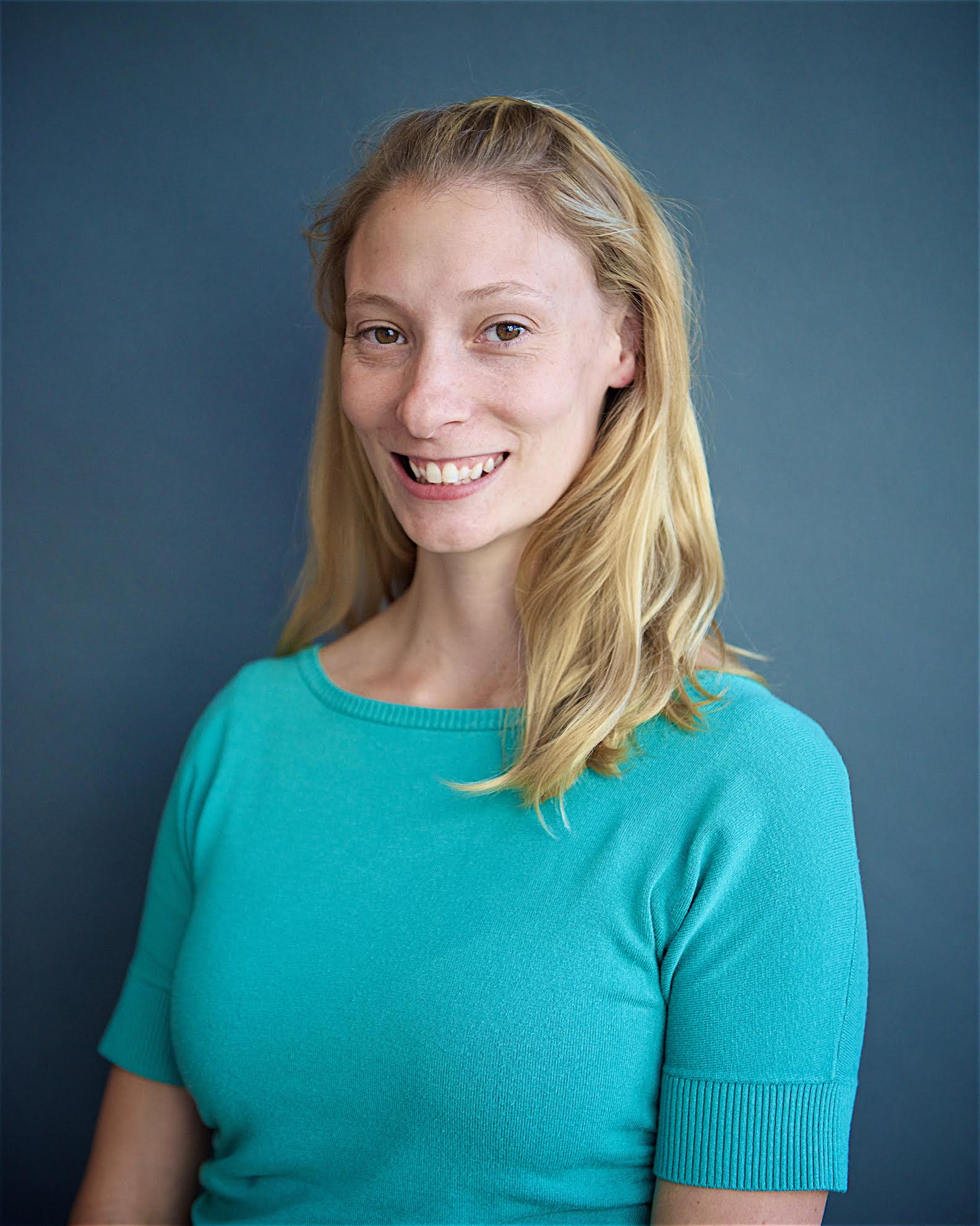 Studying Gamma-ray Galaxies with the VERITAS CollaborationPrincipal Investigators: Amy Furniss, Assistant Professor, Department of PhysicsAbstract: My collaborative project provided support for student and faculty travel the gamma-ray telescope VERITAS. This project allowed undergraduates to partake in cutting-edge gamma-ray astrophysics research using VERITAS, standing for Very Energetic Radiation Imaging Telescope Array System. The students and myself continue to participate in the local analysis of VERITAS data on extreme galaxies, complementing the hands on experience of operating the VERITAS instrument for the observing shift completed in March of 2018. The collaborative grant enables my continued membership in a large 100-pers on collaboration which utilizes and maintains the VERITAS instrument. This membership allows me to benefit from VERITAS data access and joint publication rights. The data that was taken and analyzed as part of this project will be included within a VERITAS extragalactic catalog, representing the first of its kind in a relatively young sub-field of astronomy. In addition to addressing high impact astrophysical questions on gamma-ray galaxies and the cosmological fields in our local universe, this project carried an overarching goal to involve students with the open questions relevant to particle astrophysics research, empirical observation, high performance instrumentation utilized by VERITAS, as well as instill the students with the sense of excitement that comes from working to answer fundamental questions about the Universe.
Studying Gamma-ray Galaxies with the VERITAS CollaborationPrincipal Investigators: Amy Furniss, Assistant Professor, Department of PhysicsAbstract: My collaborative project provided support for student and faculty travel the gamma-ray telescope VERITAS. This project allowed undergraduates to partake in cutting-edge gamma-ray astrophysics research using VERITAS, standing for Very Energetic Radiation Imaging Telescope Array System. The students and myself continue to participate in the local analysis of VERITAS data on extreme galaxies, complementing the hands on experience of operating the VERITAS instrument for the observing shift completed in March of 2018. The collaborative grant enables my continued membership in a large 100-pers on collaboration which utilizes and maintains the VERITAS instrument. This membership allows me to benefit from VERITAS data access and joint publication rights. The data that was taken and analyzed as part of this project will be included within a VERITAS extragalactic catalog, representing the first of its kind in a relatively young sub-field of astronomy. In addition to addressing high impact astrophysical questions on gamma-ray galaxies and the cosmological fields in our local universe, this project carried an overarching goal to involve students with the open questions relevant to particle astrophysics research, empirical observation, high performance instrumentation utilized by VERITAS, as well as instill the students with the sense of excitement that comes from working to answer fundamental questions about the Universe. -
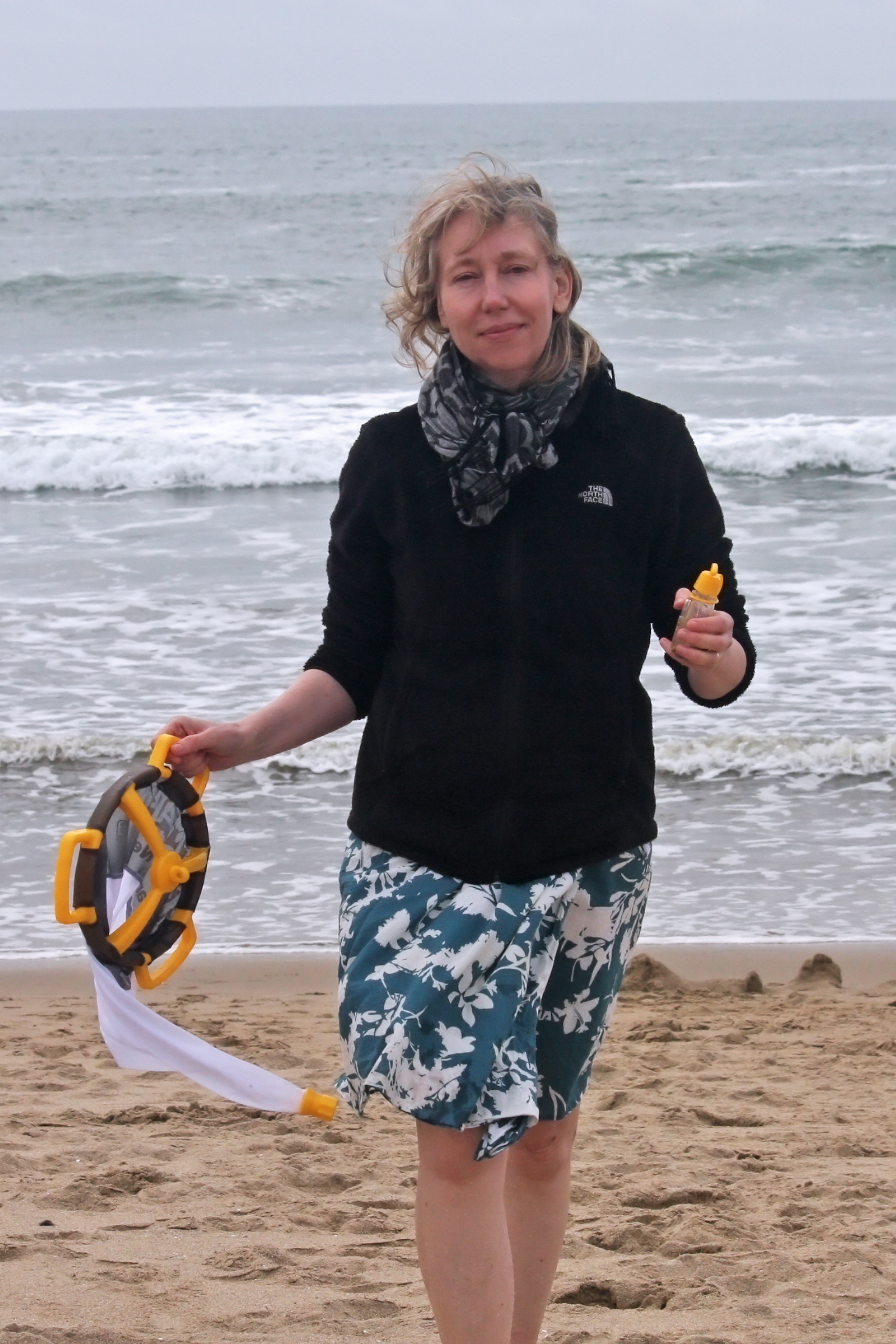 Next-generation RNA Sequencing to Untangle Plant Responses to Nutrient DeficienciesPrincipal Investigator : Claudia Uhde-Stone, Professor, Biological Sciences, California State University, East BayAbstract : Plants require nutrients, such as phosphorus, nitrogen, and iron, for growth and development. Phosphorus is one of the most limiting nutrients for crop production worldwide. Phosphorus fertilizer is usually applied as rock phosphate, a non-renewable resource which, by some estimates, may be depleted in 100-300 years. In order to develop crop plants that can grow with less fertilizer, researchers are taking a closer look at plants that are well adapted to nutrient-poor soils. White lupin can grow in poor soils where other plants can’t grow, and has become a model plant for the study of plant adaptations to nutrient deficiency. Still, not much is known about the processes by which white lupin senses nutrient deficiencies and initiates responses. Elevated sucrose (sugar) transport from shoot to root appears to act as long-distance signal, initiating nutrient starvation responses in the root. However, sucrose may not specify which nutrient stress the plant is experiencing. We hypothesize that sucrose acts as a general nutrient starvation signal, and that additional signals are needed to communicate the specific nature of the nutrient deficiency. To untangle general and specific nutrient starvation responses, we propose to use next-generation RNA sequencing, a powerful tool for high-throughput analysis of gene expression (i.e. gene activity). Understanding how white lupin senses nutrient deficiencies and integrates specific and general nutrient starvation responses should be useful for developing plants that require less fertilizer while offering improved nutritional value for human consumption.
Next-generation RNA Sequencing to Untangle Plant Responses to Nutrient DeficienciesPrincipal Investigator : Claudia Uhde-Stone, Professor, Biological Sciences, California State University, East BayAbstract : Plants require nutrients, such as phosphorus, nitrogen, and iron, for growth and development. Phosphorus is one of the most limiting nutrients for crop production worldwide. Phosphorus fertilizer is usually applied as rock phosphate, a non-renewable resource which, by some estimates, may be depleted in 100-300 years. In order to develop crop plants that can grow with less fertilizer, researchers are taking a closer look at plants that are well adapted to nutrient-poor soils. White lupin can grow in poor soils where other plants can’t grow, and has become a model plant for the study of plant adaptations to nutrient deficiency. Still, not much is known about the processes by which white lupin senses nutrient deficiencies and initiates responses. Elevated sucrose (sugar) transport from shoot to root appears to act as long-distance signal, initiating nutrient starvation responses in the root. However, sucrose may not specify which nutrient stress the plant is experiencing. We hypothesize that sucrose acts as a general nutrient starvation signal, and that additional signals are needed to communicate the specific nature of the nutrient deficiency. To untangle general and specific nutrient starvation responses, we propose to use next-generation RNA sequencing, a powerful tool for high-throughput analysis of gene expression (i.e. gene activity). Understanding how white lupin senses nutrient deficiencies and integrates specific and general nutrient starvation responses should be useful for developing plants that require less fertilizer while offering improved nutritional value for human consumption.
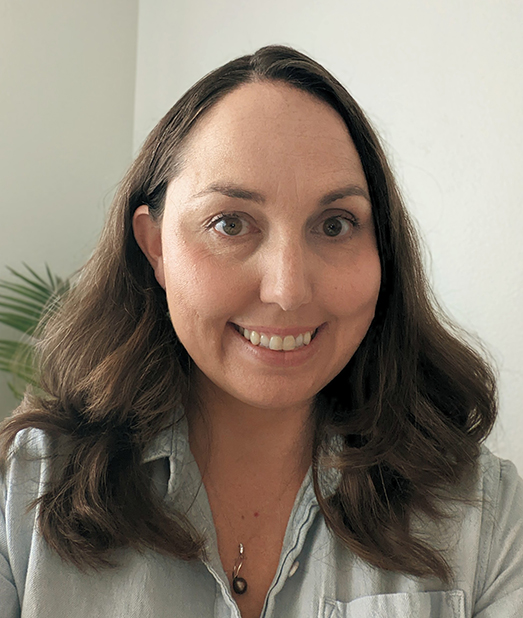 Optimal Sequence of Learning for
Optimal Sequence of Learning for Understanding Potential Influence of Social, Cultural, and Historical Traumas on Health of Bangladeshis & Nepalese Northern California
Understanding Potential Influence of Social, Cultural, and Historical Traumas on Health of Bangladeshis & Nepalese Northern California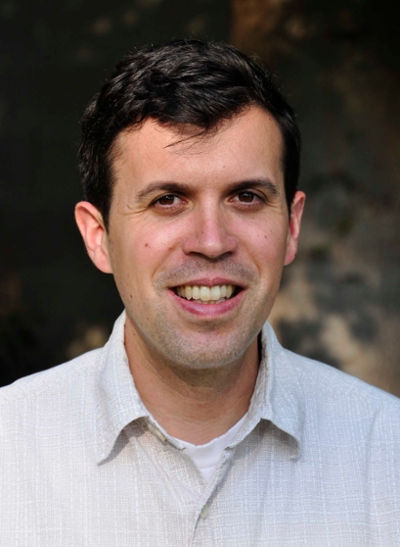
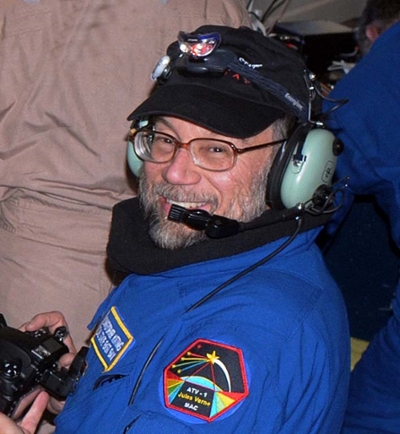 Analyzing Kitting’s pilot data on Novel Multidisciplinary Solutions to Global Climate Disruption: Persistence & Reflective Spectra of Upper Atmospheric Aerosols
Analyzing Kitting’s pilot data on Novel Multidisciplinary Solutions to Global Climate Disruption: Persistence & Reflective Spectra of Upper Atmospheric Aerosols